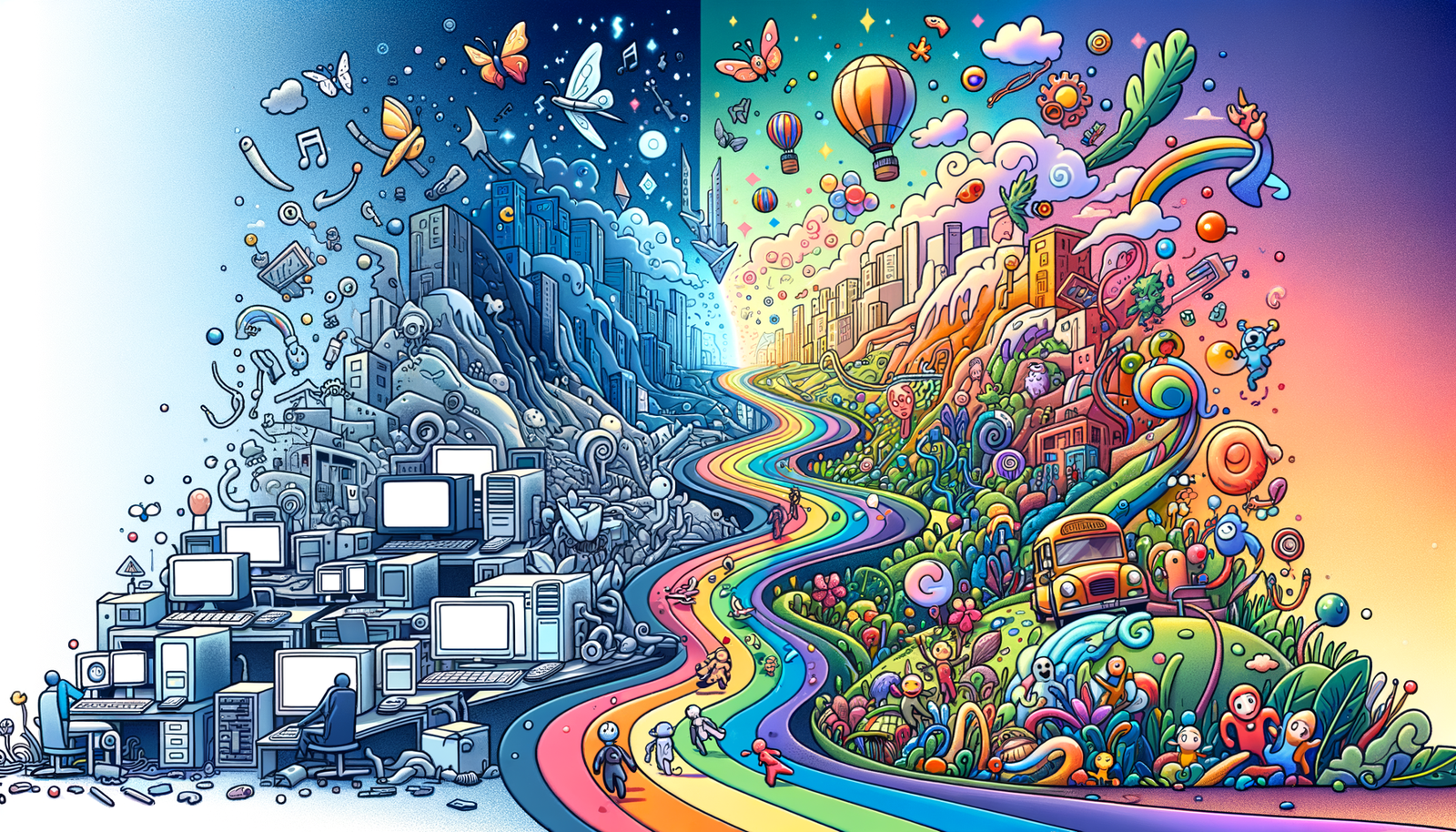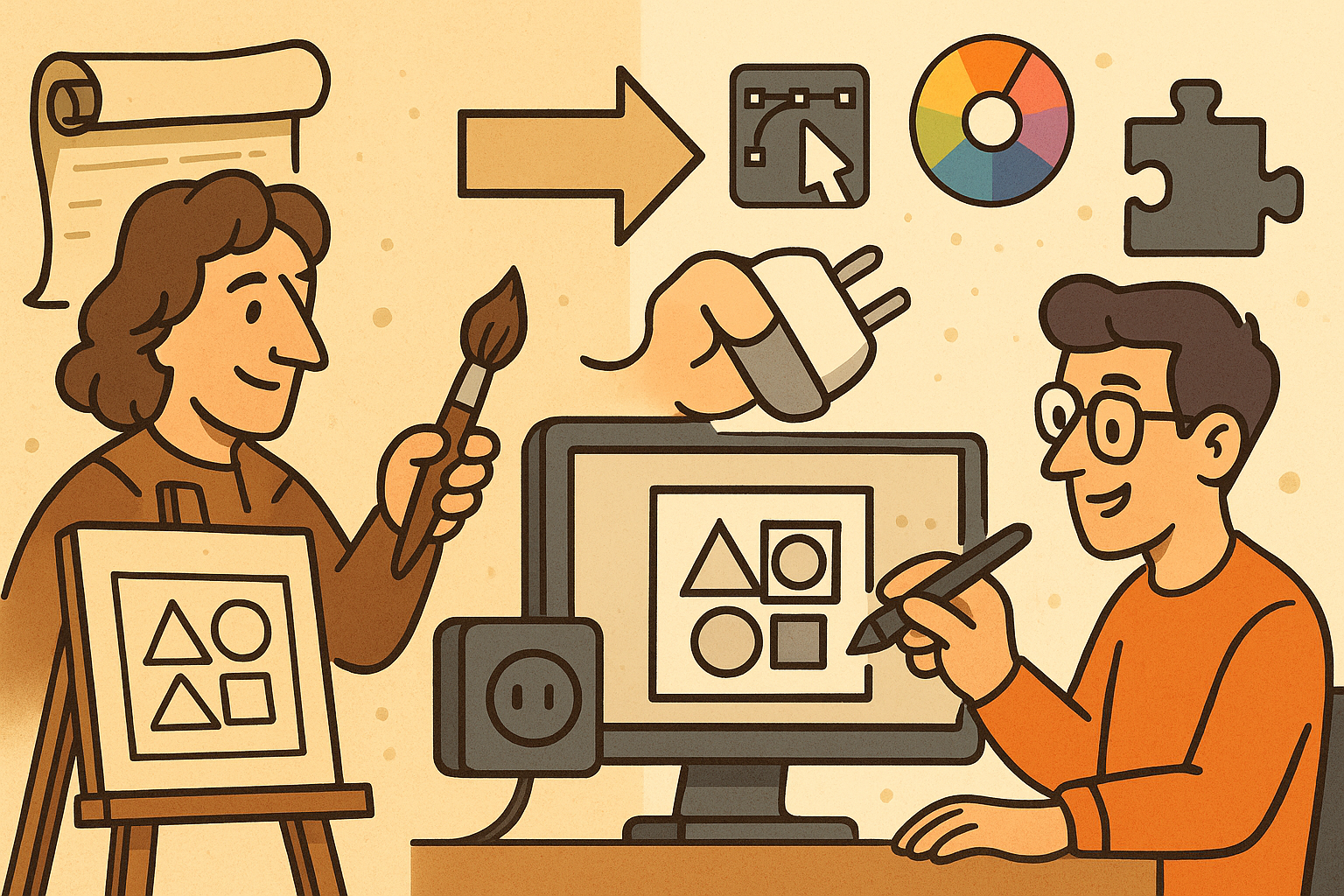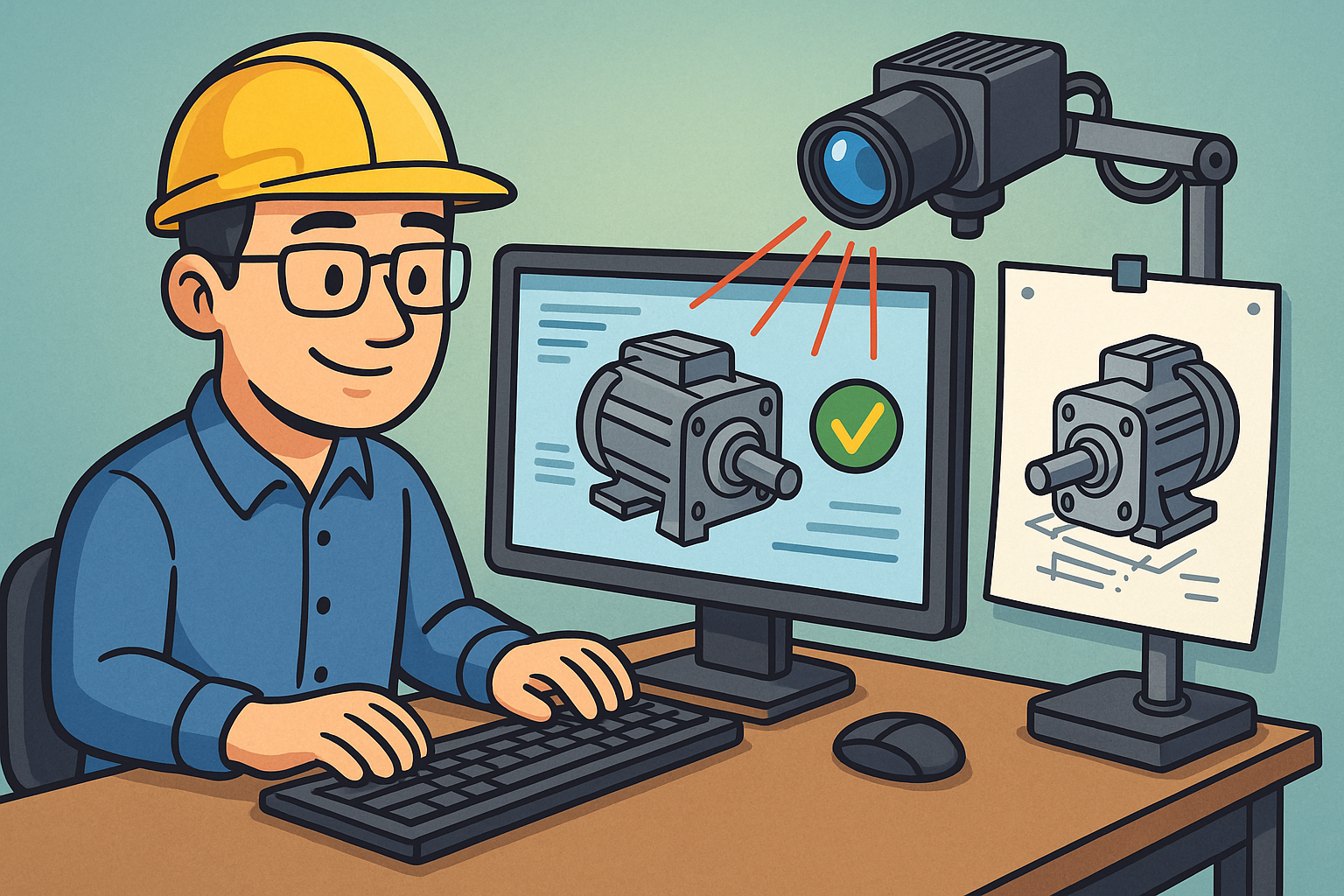Your Cart is Empty
Customer Testimonials
-
"Great customer service. The folks at Novedge were super helpful in navigating a somewhat complicated order including software upgrades and serial numbers in various stages of inactivity. They were friendly and helpful throughout the process.."
Ruben Ruckmark
"Quick & very helpful. We have been using Novedge for years and are very happy with their quick service when we need to make a purchase and excellent support resolving any issues."
Will Woodson
"Scott is the best. He reminds me about subscriptions dates, guides me in the correct direction for updates. He always responds promptly to me. He is literally the reason I continue to work with Novedge and will do so in the future."
Edward Mchugh
"Calvin Lok is “the man”. After my purchase of Sketchup 2021, he called me and provided step-by-step instructions to ease me through difficulties I was having with the setup of my new software."
Mike Borzage
Design Software History: Pixar's Pioneering Journey: From Technological Roots to Transformative Animation Leadership
August 13, 2024 6 min read


The history of Pixar in computer animation is a compelling narrative of innovation, creativity, and technical brilliance. Founded by visionaries Ed Catmull, Alvy Ray Smith, and Steve Jobs, Pixar has continually pushed the boundaries of what is possible in the realm of computer-generated imagery (CGI). This article delves into the genesis of Pixar, its groundbreaking technological advancements, the transformative impact of its feature films, and its lasting legacy in the animation industry.
The Genesis of Pixar and Its Early Innovations
Founding and Vision
Pixar's journey began with the collaboration of three influential figures: Ed Catmull, Alvy Ray Smith, and Steve Jobs. Each brought a unique set of skills and vision that would shape the future of computer animation. Ed Catmull, a computer scientist, was deeply invested in the potential of computer graphics. Alvy Ray Smith, an artist and technologist, shared Catmull's passion for merging art with technology. Steve Jobs, co-founder of Apple Inc., provided the business acumen and financial backing necessary to transform their vision into reality.
Their mission was clear: to create an environment where cutting-edge technology and creative storytelling could converge to produce animated films of unprecedented quality. This vision was rooted in a profound belief that technology could enhance, rather than diminish, the artistry of animation. From its inception, Pixar sought to explore the uncharted territories of 3D animation, striving to achieve lifelike characters and immersive worlds.
Technological Roots
Pixar's technological foundation can be traced back to its early days as the Computer Division of Lucasfilm. Here, Catmull and Smith, along with a team of skilled engineers and artists, laid the groundwork for many of the innovations that would later define Pixar. One of their first major contributions was the development of the Pixar Image Computer, a high-performance graphics workstation designed for medical imaging and other demanding applications.
Perhaps the most significant early innovation was the introduction of the RenderMan rendering software. RenderMan was designed to produce high-quality, photorealistic images by employing advanced shading, lighting, and texturing techniques. This software quickly gained recognition for its ability to achieve stunning visual effects, setting a new standard in the industry.
Groundbreaking Short Films
Pixar's early short films were instrumental in demonstrating the potential of computer animation. The 1986 short film "Luxo Jr.", directed by John Lasseter, was a landmark achievement. Luxo Jr. was the first film to use 3D animation to create a believable, emotionally engaging character. The film's success was a testament to Pixar's ability to combine technical expertise with storytelling prowess.
Another significant early work was "Tin Toy", released in 1988. This short film featured the first fully computer-generated human character and won an Academy Award for Best Animated Short Film. Tin Toy's success further validated Pixar's approach and solidified its reputation as a pioneer in computer animation.
RenderMan and the Technical Foundations of Modern Animation
Introduction of RenderMan
The introduction of RenderMan marked a pivotal moment in the history of computer animation. RenderMan's technical specifications and innovations were groundbreaking, offering features such as programmable shading, advanced anti-aliasing, and motion blur. These capabilities enabled animators to achieve a level of visual realism that was previously unattainable.
RenderMan's impact extended beyond Pixar, as it was adopted by other major studios for their visual effects and animation needs. Films such as Jurassic Park and Terminator 2: Judgment Day utilized RenderMan to create their iconic visual effects, underscoring the software's versatility and power.
Shading Language and Rendering Innovations
A key component of RenderMan's success was the development of the RenderMan Shading Language (RSL). RSL allowed artists to create complex shading effects with precision and control. This innovation revolutionized the way lighting, shading, and texturing were approached in the animation industry.
RenderMan's rendering innovations also included the introduction of techniques such as sub-surface scattering, global illumination, and ray tracing. These advancements enabled the creation of highly realistic materials, fluids, and environments, further elevating the quality of CGI in films.
Technical Academy Awards
Pixar's technical achievements did not go unnoticed by the Academy of Motion Picture Arts and Sciences. Over the years, Pixar received numerous Technical Academy Awards in recognition of their contributions to the field of animation. These awards highlighted the groundbreaking nature of their work and their enduring influence on the industry.
Some of the key awards won by Pixar include the Scientific and Engineering Award for RenderMan and the Technical Achievement Award for their innovations in shading and lighting techniques. These accolades underscored the profound impact of Pixar's technology on the craft of animation.
Feature Films that Changed the Landscape
Toy Story: The First Full-Length 3D Animated Feature
The release of Toy Story in 1995 was a watershed moment in the history of animation. As the first full-length 3D animated feature film, Toy Story represented a monumental achievement for Pixar. The production of the film posed numerous technical challenges, from developing lifelike character animations to creating richly detailed environments.
The success of Toy Story had a profound impact on the animation industry. It demonstrated the viability of 3D animation as a medium for feature films and captivated audiences worldwide with its innovative visuals and heartfelt storytelling. The film's reception set the stage for Pixar's future successes and established 3D animation as a dominant force in the industry.
Subsequent Innovations in Animation
Following the success of Toy Story, Pixar continued to push the boundaries of animation with a series of groundbreaking films. Finding Nemo (2003) showcased advances in character animation, particularly in the depiction of underwater environments and fluid dynamics. The film's lifelike portrayal of aquatic life set new standards for realism in animation.
The Incredibles (2004) introduced significant innovations in character animation, including advanced techniques for simulating human movement and facial expressions. The film also featured complex action sequences and dynamic camera work, elevating the level of technical sophistication in animated films.
Pixar continued to innovate with films like Monsters, Inc. (2001) and Brave (2012). Monsters, Inc. demonstrated remarkable advancements in hair and fabric simulation, while Brave showcased cutting-edge techniques for rendering realistic hair and fur. These technical strides contributed to the studio's reputation for excellence and innovation.
Software and Tools Developed
Pixar's success in animation was supported by the development of proprietary software and tools tailored to their specific needs. Marionette, an in-house tool for character animation, allowed animators to create nuanced and expressive performances with greater ease and efficiency.
Another essential tool was Fizt, a system for fluid simulation used in films like Finding Nemo. Fizt enabled the realistic depiction of water and other fluid dynamics, enhancing the visual authenticity of Pixar's animated worlds.
These in-house tools exemplified Pixar's commitment to innovation and their ability to develop customized solutions to meet the evolving demands of their projects.
Pixar’s Legacy and Influence on Modern Animation
Talent Cultivation and Industry Standards
Pixar's influence extends beyond their films and technology; they have also played a crucial role in nurturing the next generation of animators and technical directors. The studio's commitment to training and mentorship has helped cultivate a pool of talented professionals who continue to advance the field of animation.
Pixar's approach to animation has influenced curricula in animation and computer graphics programs around the world. Many educational institutions have adopted techniques and principles pioneered by Pixar, ensuring that emerging artists and technologists are well-equipped to contribute to the industry.
Collaborations and Technological Ecosystem
Pixar has also fostered collaborations with software giants such as Autodesk and NVIDIA. These partnerships have led to the development of industry standards for animation and visual effects, including advancements in GPU rendering and real-time graphics.
Through these collaborations, Pixar has contributed to the broader technological ecosystem, influencing the tools and technologies used by studios worldwide. Their work has driven the evolution of animation software, ensuring that the industry continues to benefit from the latest innovations.
Cultural and Artistic Impact
Beyond their technological contributions, Pixar has had a profound cultural and artistic impact. Their films have set new benchmarks for storytelling in animation, blending heartwarming narratives with cutting-edge visuals. Pixar's commitment to quality and innovation has elevated the status of animated films, earning them widespread critical acclaim and commercial success.
The studio's work has also contributed to the broader cultural acceptance and appreciation of animated films as a legitimate and sophisticated form of storytelling. Pixar's influence is evident in the increasing recognition of animated films at major award ceremonies and their growing presence in popular culture.
Looking to the future, Pixar's legacy continues to inspire new trends in animation. Innovations such as real-time rendering and the integration of artificial intelligence are poised to shape the next generation of animated films, building on the foundation that Pixar has established.
In conclusion, Pixar's journey from its founding to its current status as a leader in animation is a testament to the power of innovation, creativity, and collaboration. Their groundbreaking work in computer animation has transformed the industry, setting new standards for visual storytelling and technological excellence. As Pixar continues to push the boundaries of what is possible, their influence will undoubtedly resonate for years to come.
Also in Design News

Design Software History: Historical Development and Impact of Plug-ins and Extensions in Design Software Evolution
October 20, 2025 8 min read
Read More
Revolutionizing Design Validation with Machine Vision Technology
October 20, 2025 9 min read
Read More
Cinema 4D Tip: Optimizing Game Asset Creation for Unity in Cinema 4D
October 20, 2025 3 min read
Read MoreSubscribe
Sign up to get the latest on sales, new releases and more …


